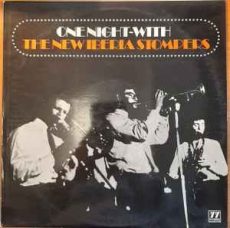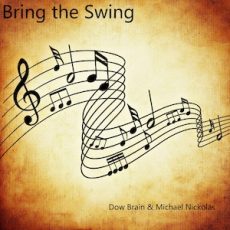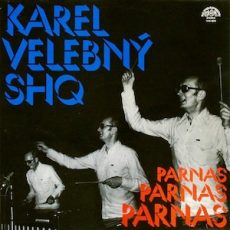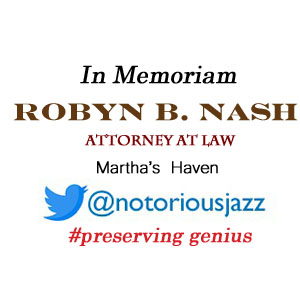
Daily Dose Of Jazz…
Nick Paul was born on April 5, 1939 and raised in London, England. Growing up while playing a host of woodwind instruments his influences were George Lewis and John Handy.
Very active during the 60s, 70s and 80s in the south of England, in Europe he also played New Orleans Jazz. Paul played with many bands including The Barry Martin Ragtime Band, Malc Murphy’s Storyville Stompers, Bill Brunskil, The New Iberia Stompers, The New Revival Jazz Band. He spent time in New Orleans listening to the masters and improving his knowledge of the music.
Leaving England in 1987 for sunnier climes, Nick lived aboard his sailing boat Storyville in Cyprus for ten years playing in hotels and clubs. His musical tastes broadened and for the last twelve years he has been playing mainly small group swing and mainstream jazz of the 50s era.
Woodwind master Nick Paul, who now lives in Thailand, is still playing and has established a small recording studio.
More Posts: history,instrumental,jazz,music,woodwinds

Daily Dose Of Jazz…
Michael Nickolas was born on March 23, 1962 in Southington, Connecticut. A move to Boston, Massachusetts in 1980 had him attending the Berklee College of Music. After graduating Cum Laude in 1984, the guitarist became a founding member and leader of one of Boston’s most successful local acts, High Function. The group played extensively at clubs and colleges throughout New England and toured Switzerland, New York City, and recorded an eight song album in Chicago, Illinois.
After leaving High Function, he co-found and played guitar for the Boston Music Award winning R&B band, Universal Language. In addition to performing, Michael was teaching himself the art of recording, and built a home recording studio, worked as a freelance recording engineer, and has been published numerous times in the international periodical, Recording Magazine.
His home studio, Studio Nine Productions, has clients working on everything from voice over narration sessions to digital audio editing and CD creation. As a composer, Nickolas has licensed original music for NBC, ABC and CBS television’s daytime programming. In prime time, as well as Showtime.
Guitarist Michael Nickolas continues to perform, compose, record and engineer.
More Posts: bandleader,guitar,history,instrumental,jazz,music

Daily Dose Of Jazz…
Karel Velebný was born March 17, 1931 in Prague, Czechoslovakia and at seven years old, he played piano and at fifteen was a modern jazz enthusiast who taught himself to play alto saxophone. He graduated from Gymnasium then studied drumming at the Prague Conservatory, making his first public performance as a student, and became a full-time professional as soon as he graduated.
From 1955 to 1958 he played with Czech jazzman Karel Krautgartner’s orchestra, then joined contrabassist Luděk Hulan to co-found Studio 5, which became the key ensemble of modern Czech jazz. He continued to work with Krautgartner until the latter emigrated in 1968.
In 1960, the Studio 5 ensemble was absorbed by the Dance Orchestra of Czechoslovakia Radio, but Velebný and the original Studio 5 members soon quit. In 1961, he and flautist Jan Konopásek co-founded SHQ, initially part of the Spejbl and Hurvínek Theatre thus Spejbl and Huvínek Quintet, but later began taking independent performances.
SHQ became one of the most important bands in Czech jazz history. He was its leader, composer, arranger, played as a multi-instrumentalist and taught the younger band members. SHQ’s instrumental line-up and membership changed frequently. Karel played with various Czech jazz ensembles, including Kamil Hála’s orchestra, the Linha Singers ensemble and with other regular collaborators.
As a composer, Velebný concentrated solely on jazz, in compositional styles and arrangements reminiscent of Gerry Mulligan, Chick Corea, Gary Burton and Benny Golson. He wrote mainly for his own ensembles notably Studio 5 and SHQ but also for the Kamil Hála Orchestra, the Karel Vlach Orchestra and others.
In 1978 he was invited to the Berklee College of Music, where he studied jazz teaching and the different approaches of European and American jazz. He organized and led the Summer Jazz Workshop in Frýdlant, Czech Republic until his death. As a teacher, he emphasized knowledge of techniques which could be broadly applied on jazz standards. He also wrote the specialist jazz textbook The Jazz Practical.
Diagnosed with a serious heart disease he was forced to quit as a saxophonist and vibraphonist and was restricted to piano. On March 7, 1989 vibraphonist, pianist and saxophonist Karel Velebný,who was also a composer, arranger, actor, writer and music pedagogue and one of the founders of modern Czech jazz in the second half of the 20th century, died in Prague.
More Posts: bandleader,history,instrumental,jazz,music,piano,saxophone,vibraphone

Daily Dose Of Jazz…
Harry Haag James was born on March 15, 1916 in Albany, Georgia the son of a bandleader in a traveling circus, the Mighty Haag Circus, and Myrtle Maybelle Stewart, an acrobat and horseback rider. He started performing with the circus at an early age, first as a contortionist at the age of four, then playing the snare drum in the band from about the age of six.
James started taking trumpet lessons from his father at age eight, and by age twelve he was leading the second band in the Christy Brothers Circus, for which his family was then working. James’s father placed him on a strict daily practice schedule. In 1924, his family settled in Beaumont, Texas and in the early 1930s he began playing in local dance bands when he was 15. While still a student at Dick Dowling Junior High School, he was a regular member of Beaumont High School’s Royal Purple Band, and in May 1931 he took first place as trumpet soloist at the Texas Band Teacher’s Association’s Annual Eastern Division contest held in Temple, Texas.
His first job was playing at the Peabody Hotel in Memphis, Tennessee and played regularly with Herman Waldman’s band, where he was noticed by Ben Pollack. In 1935 he joined Pollack’s band, but left two years later and joined Benny Goodman’s orchestra through 1938. He was nicknamed “The Hawk” early in his career for his ability to sight-read. With financial backing from Goodma, Harry debuted his own big band in Philadelphia, Pennsylvania, in 1939, but it didn’t click until adding a string section in 1941. Subsequently, known as Harry James and His Music Makers, he went on to produce hits, appeared in four Hollywood films, and toured with the band into the 1980s.
Trumpeter and big band leader Harry James was a heavy smoker, drinker, and gambler, in 1983 he was diagnosed with lymphatic cancer. He played his last professional job, with the Harry James Orchestra, on June 26, 1983, in Los Angeles, California dying just nine days later in Las Vegas, Nevada on July 5, 1983, at age 67. Frank Sinatra gave the eulogy at his funeral, held in Las Vegas.
More Posts: bandleader,history,instrumental,jazz,music,trumpet

Daily Dose Of Jazz…
George Holmes “Buddy” Tate was born on February 22, 1913 in Sherman, Texas and first played the alto saxophone. He began performing in public as early as 1925 in a band called McCloud’s Night Owls, then later in the decade was playing tenor saxophone around the Southwest with bands led by Terrence Holder, Andy Kirk and Nat Towles.
He joined Count Basie in 1939 replacing Herschel Evans and stayed with him until 1948. After his period with Basie ended, he worked with several other bands before finding success on his own, starting in 1953 in Harlem. Buddy’s group worked at the Celebrity Club from 1953 to 1974. In the late 1970s, he co-led a band with Paul Quinichette and worked with Benny Goodman.
In 1979, Tate’s hometown invited him to play a concert at Austin College’s Sid Richardson Center as part of The Sherman Symphony Pops Series. Mayor Virginia Morriss issued a proclamation declaring October 6th as Buddy Tate Day. Accompanying Tate were Jay McShann, Claude Williams, Buster Smith and Paul Gunther.
In 1980, he was injured by scalding water in a hotel shower, which kept him inactive for four months. The 1990s saw him slow down, but he remained active playing with Lionel Hampton among others.
In 1992, Tate took part in the documentary, Texas Tenor: The Illinois Jacquet Story. In 1996, he recorded with reeds player James Carter on the younger man’s second release for Atlantic Records, Conversin’ with the Elders, along with trumpeters Harry “Sweets” Edison and Lester Bowie, and saxophonists Hamiet Bluiett and Larry Smith.
Living in New York until 2001, he moved to Phoenix, Arizona to be cared for by his daughter. Saxophonist and clarinetist Buddy Tate died in Chandler, Arizona twelve days before his 88th birthday on February 10, 2001.
More Posts: clarinet,history,instrumental,jazz,music,saxophone




